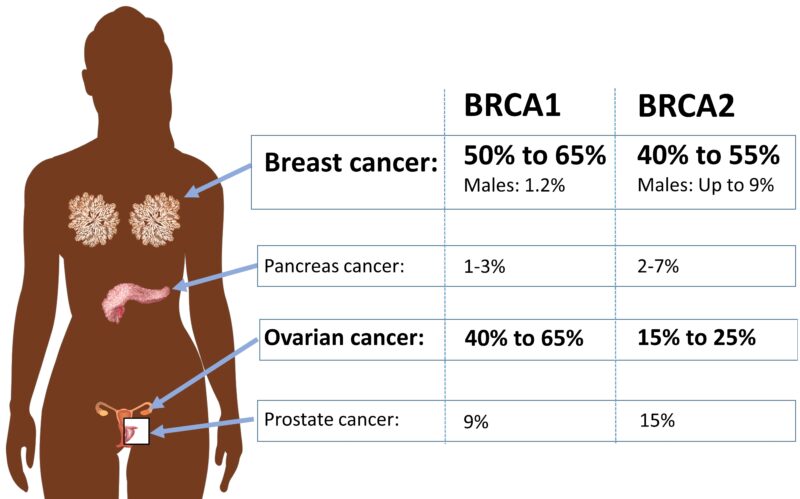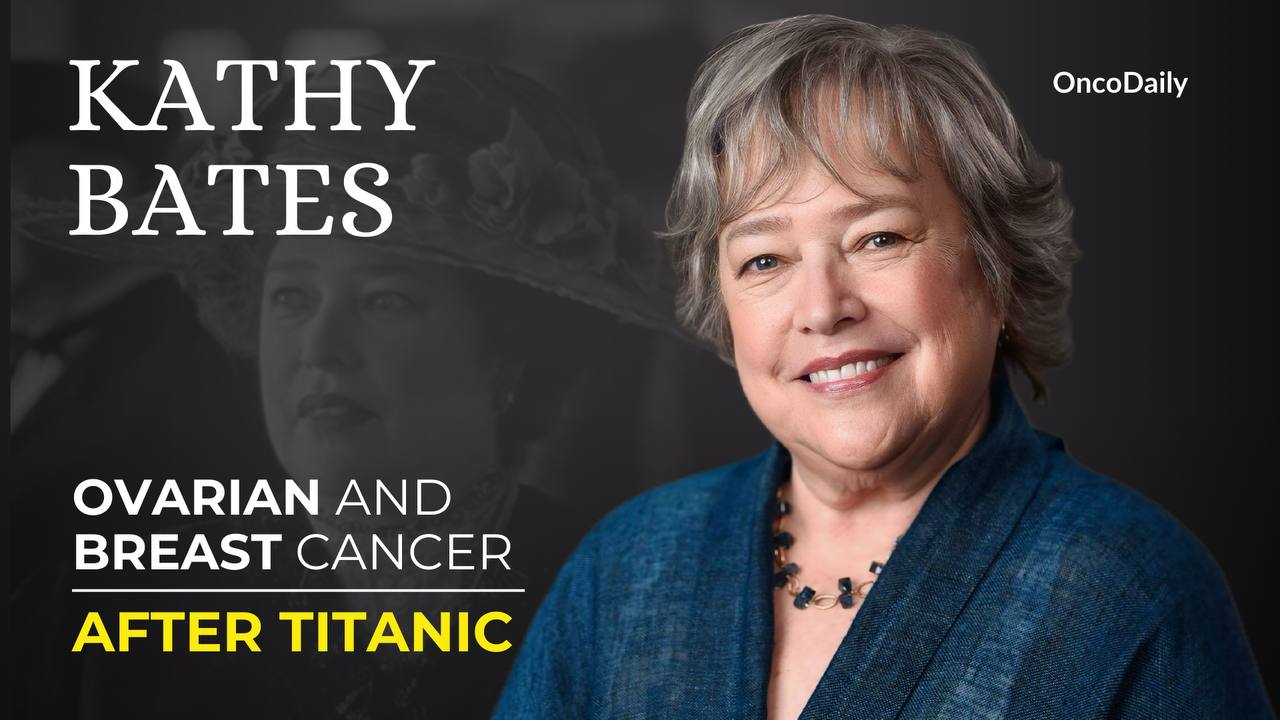Kathy Bates is a renowned American actress, celebrated for her Oscar-winning performance in “Misery” and numerous accolades throughout her career. Beyond her acting, Bates is a vocal advocate for cancer awareness following her battles with ovarian and breast cancer. Diagnosed with ovarian cancer in 2003 and breast cancer in 2012, she has publicly shared her experiences to inspire others. The five-year survival rate for ovarian cancer is approximately 47% (American Cancer Society, 2023), while for localized breast cancer, it is around 90% (National Cancer Institute, 2023). Bates’ resilience and advocacy highlight the importance of early detection and support, making her a powerful role model in the fight against cancer.

How Did Kathy Bates Get Diagnosed with Ovarian Cancer?
Kathy Bates was diagnosed with ovarian cancer in 2003, a diagnosis that came as a surprise despite her proactive approach to health. Prior to her diagnosis, she experienced vague symptoms, including abdominal discomfort and bloating. These symptoms are common in many conditions, which can lead to delays in diagnosis. Bates underwent a routine screening that included blood tests and imaging, which ultimately raised concerns and led to further investigation.
Symptoms
Ovarian cancer is particularly challenging to detect early because its symptoms can be subtle and easily attributed to less serious health issues. Common indicators include:
- Abdominal pain or discomfort
- Bloating or swelling
- Changes in appetite or feeling full quickly
- Frequent urination
According to the American Cancer Society, around 70% of ovarian cancer cases are diagnosed at an advanced stage, primarily due to the vague nature of the symptoms (American Cancer Society, 2023). The overall five-year survival rate for ovarian cancer is approximately 47%, but this rate drops significantly for late-stage diagnoses, underscoring the critical need for early detection (National Cancer Institute, 2023).
How Did Kathy Bates React to Her Ovarian Cancer Diagnosis?
She candidly shared her emotional struggles in interviews, grappling with anxiety about her future and the vulnerability of facing a life-threatening illness. The diagnosis prompted deep reflection on her life and priorities, and she highlighted the importance of support from loved ones during this challenging time.
What was the Prognosis?
Her prognosis was cautiously optimistic, as stage II ovarian cancer typically has a better outlook compared to more advanced stages. The standard treatment plan involved a combination of cytoreductive surgery to remove the tumor and affected tissues, followed by adjuvant chemotherapy to target any residual cancer cells.
The early detection of her cancer significantly improved her chances for favorable treatment outcomes. Studies indicate that the five-year survival rate for stage II ovarian cancer is approximately 70-80%, highlighting the importance of timely intervention (American Cancer Society, 2023).
Bates’ experience with ovarian cancer profoundly impacted her perspective on life. She reported developing a heightened appreciation for her health and the relationships in her life. The challenges of her diagnosis prompted her to prioritize self-care and became a catalyst for her advocacy work in cancer awareness. Bates emphasized that, while the experience was distressing, it ultimately strengthened her resilience and commitment to living life with intention and gratitude.
What Treatments Did Kathy Bates Undergo for Ovarian Cancer?
Kathy Bates’ treatment plan for ovarian cancer included cytoreductive surgery to remove the tumor and affected tissues, followed by a chemotherapy regimen aimed at targeting residual cancer cells. This approach is standard for stage II ovarian cancer and is crucial for improving prognosis.
Physically, Bates faced typical side effects of chemotherapy, such as fatigue, nausea, and hair loss, necessitating a period of recovery. Emotionally, the diagnosis and treatment led to significant anxiety about her health and future. However, she emerged with a strengthened resilience and became a vocal advocate for cancer awareness, using her experience to inspire others facing similar challenges. Her journey highlights the complex interplay of physical and emotional impacts during cancer treatment.
Surgery and Mastectomy
in 2003 following her diagnosis , Kathy Bates underwent a hysterectomy to treat her ovarian cancer. This surgery involves the removal of the uterus, and in her case, it likely included the removal of the ovaries and fallopian tubes as well, which is common in treating ovarian cancer.
Kathy Bates underwent a double mastectomy in 2012 following her diagnosis of stage 2 breast cancer. After experiencing health issues that led her to seek an MRI, a tumor was discovered in her left breast. In an exclusive announcement, Bates shared, “After much consideration, I underwent a double mastectomy” and was relieved to learn that she would not need radiation or chemotherapy following the surgery.
The procedure involved the removal of both breasts and 19 lymph nodes, which is common when cancer has spread beyond the breast tissue. Bates described the aftermath of the surgery as challenging, stating that the pain and physical changes were more difficult to cope with than her previous battle with ovarian cancer
Following the surgery, Bates faced several challenges during her recovery:
- Physical Recovery: The initial recovery involved managing pain, discomfort, and limited mobility. She experienced swelling and had to navigate daily activities with care as her body healed.
- Emotional Impact: Bates encountered emotional challenges related to body image and the psychological effects of undergoing such a significant procedure. Adjusting to the physical changes was difficult, and she expressed feelings of vulnerability.
- Support System: Bates emphasized the importance of her support system during recovery, relying on family, friends, and medical professionals to help her through the healing process. Their encouragement was crucial in managing both the physical and emotional aspects of recovery.
How Did Kathy Bates Overcome Breast and Ovarian Cancer?
Kathy Bates demonstrated remarkable emotional resilience during her battles with ovarian and breast cancer. By showing vulnerability and openly sharing her experiences, she fostered connections that empowered her and helped mitigate feelings of isolation. Mentally, she maintained a positive outlook, relying on a supportive network of family and friends.
Physically, Bates adhered to her medical team’s recommendations and engaged in regular follow-ups. She made significant lifestyle changes, including a balanced diet rich in fruits and vegetables, regular exercise, and mindfulness practices to enhance her recovery and overall well-being. Her journey exemplifies the power of resilience and proactive health management, inspiring others in their own cancer journeys.
Support from Family and Friends
Kathy Bates’ journey through ovarian and breast cancer was profoundly enriched by the unwavering love and support of her family, friends, and colleagues. Their presence served as a vital lifeline during her treatment and recovery, providing both emotional strength and practical assistance.
Bates often speaks with deep gratitude about the role her family played in her healing process. Their steadfast encouragement created a nurturing environment that allowed her to focus on her recovery. In her own words, she expressed,
“I couldn’t have done it without my family. Their support made all the difference during those tough times.”
This foundation of love not only bolstered her spirit but also reminded her of the resilience inherent in human connection.
Bates’ friends and colleagues from the entertainment industry also rallied around her, creating a circle of compassion and understanding. Many reached out with heartfelt messages and shared their own experiences with cancer, which helped dispel feelings of isolation. Bates recalled the comfort she found in hearing their stories, noting that their camaraderie reinforced her belief that she was not alone in her fight.
One particularly touching anecdote involved a close friend who sent her care packages filled with uplifting notes and small tokens of affection. These thoughtful gestures brought warmth and joy into her days during chemotherapy, reminding her of the beauty and love that still surrounded her, even amidst the trials of illness. Bates has eloquently articulated the significance of a supportive network, stating,
“You need to have people around you who lift you up when you’re feeling down.”
Mental and Emotional Challenges
The dual diagnoses brought a wave of uncertainty and dread. Bates experienced moments of profound fear, grappling with thoughts about her future and the implications of living with a heightened risk of cancer. The anxiety was exacerbated by the invasive nature of her treatments, including surgeries and chemotherapy, which often left her feeling vulnerable and out of control.
Despite these challenges, Bates employed several effective coping strategies:
- Open Communication: She emphasized the importance of discussing her fears and emotions with trusted family and friends. This openness allowed her to process her feelings and feel less isolated in her struggles.
- Seeking Professional Support: Bates sought counseling and support from mental health professionals, recognizing that navigating cancer treatment required not just physical resilience but also emotional support.
- Engaging in Advocacy: Channeling her experiences into advocacy for cancer awareness became a powerful outlet. By sharing her journey publicly, she found purpose and connection with others facing similar battles, which helped mitigate feelings of helplessness.
Bates focused on cultivating a positive mindset throughout her treatment. She adopted practices that fostered gratitude, often reflecting on the support she received and the moments of joy in her life. Bates engaged in activities that brought her happiness, such as spending time with loved ones and enjoying her passions, which helped shift her focus away from the fear of illness.
Additionally, she spoke about the importance of humor as a coping mechanism. Finding laughter in everyday moments provided her with a necessary reprieve from the heaviness of her situation.
How Did Advocacy and Public Awareness Help?
Kathy Bates has become a passionate advocate for cancer awareness following her experiences with ovarian and breast cancer. She actively participates in initiatives aimed at raising public understanding of these diseases, particularly emphasizing the importance of early detection and genetic testing. Through interviews, public speaking, and social media, Bates educates others about recognizing symptoms and encourages women to seek medical advice.

Collaborations with Health Organizations
As a breast cancer survivor who underwent a bilateral mastectomy, Kathy Bates has personally experienced the challenges of lymphedema, which affects up to 30% of breast cancer survivors, making her advocacy for lymphedema awareness and research particularly impactful and personal.
Kathy Bates serves as national spokesperson for the Lymphatic Education & Research Network (LE&RN), addressing audiences at various events, including the New York Walk for Lymphedema & Lymphatic Diseases and the DC/VA Walk to Fight Lymphedema & Lymphatic Diseases at the Lincoln Memorial. She has also participated in Capitol Hill Lobby Day, advocating for increased research funding.
Bates has shared her personal experiences with ovarian cancer, breast cancer, and lymphedema in interviews with mainstream publications and television productions, including an appearance on The Kelly Clarkson Show. Through her involvement in LE&RN’s “Face of Lymphedema” campaign and her frank discussions about her health struggles, Bates has significantly contributed to raising awareness about lymphedema and the importance of early detection and treatment
What Is Kathy Bates’ Life Like After Cancer?
Kathy Bates’ life post-treatment has been characterized by a commitment to advocacy and a focus on maintaining her health. To support her overall health, Bates has made significant lifestyle changes. She follows a balanced diet rich in whole foods, including fruits and vegetables, to boost her immune system and overall well-being. Regular exercise is a key component of her routine, as it not only aids in managing lymphedema but also enhances her physical and mental health.
Additionally, Bates engages in mindfulness practices to help cope with stress and maintain a positive outlook. By focusing on self-care and surrounding herself with a supportive community, she continues to navigate the complexities of life after cancer with resilience and determination.
Ongoing Health Challenges
Despite her recovery, Bates manages lymphedema, a condition that can arise after cancer treatments, particularly following surgeries that involve lymph node removal. She has been open about her journey with lymphedema, highlighting the physical and emotional challenges it presents. Bates emphasizes the importance of proper management techniques, such as regular exercise, compression garments, and physical therapy, to help mitigate symptoms.
What Causes Ovarian and Breast Cancer?
Ovarian and breast cancers are influenced by a combination of genetic, lifestyle, and environmental factors.
Genetic Factors
Mutations in the BRCA1 and BRCA2 genes are well-known contributors to increased risk for breast and ovarian cancers. These mutations impair DNA repair mechanisms, leading to an accumulation of genetic errors that can result in cancer development. Women with BRCA mutations face a lifetime risk of up to 72% for breast cancer and 44% for ovarian cancer, compared to 12% and 1.3% in the general population, respectively.

Genetic counseling and testing are essential for individuals with a family history of cancer. These services provide critical information regarding risk assessment and potential preventive measures, including enhanced surveillance and prophylactic surgeries .
Lifestyle and Environmental Factors
- Obesity: Excess body weight is a significant risk factor for both ovarian and breast cancers. Fat tissue produces estrogen, which can promote the growth of hormone-sensitive tumors (World Health Organization, 2021).
- Physical Inactivity: A sedentary lifestyle is associated with a higher risk of developing these cancers. Regular exercise helps maintain a healthy weight and may lower estrogen levels (American Cancer Society, 2022).
- Alcohol Consumption: High alcohol intake is linked to increased breast cancer risk. Women consuming more than one drink per day may face elevated risk (National Cancer Institute, 2021).
- Diet: Diets high in processed foods, red meats, and sugars may contribute to obesity and inflammation, both associated with cancer. Conversely, diets rich in fruits, vegetables, whole grains, and healthy fats can provide protective benefits (Harvard T.H. Chan School of Public Health, 2021).
Environmental Factors
- Chemical Exposure: Prolonged exposure to pesticides and industrial chemicals, such as polychlorinated biphenyls (PCBs) and benzene, has been linked to increased cancer risk (United States Environmental Protection Agency, 2022).
- Endocrine Disruptors: Chemicals found in certain plastics and personal care products can interfere with hormonal functions, potentially raising the risk of hormone-sensitive cancers (National Institute of Environmental Health Sciences, 2020).
- Heavy Metals: Exposure to heavy metals like lead and arsenic from contaminated water and air has been associated with cancer (World Health Organization, 2021).
- Radiation: Ionizing radiation, from medical treatments or environmental sources, can increase breast cancer risk (American Cancer Society, 2022).
How Can Ovarian and Breast Cancer Be Prevented?
Implementing these preventive measures can significantly reduce the risk of developing ovarian and breast cancers. Regular screenings, healthy lifestyle choices, and dietary adjustments are vital components of an effective cancer prevention strategy.
Breast Cancer Screenings
BRCA mutations, specifically in the BRCA1 and BRCA2 genes, significantly increase the risk of developing breast and ovarian cancers. Women with these mutations have a higher lifetime risk of breast cancer (up to 85%) and ovarian cancer (up to 40-60%). Preventive measures for those with BRCA mutations include increased screening, risk-reducing surgery, medications, lifestyle changes, and genetic counseling.
Many individuals choose risk-reducing surgery, such as prophylactic mastectomy (removal of breasts) and/or salpingo-oophorectomy (removal of ovaries and fallopian tubes), to lower their cancer risk. The National Cancer Institute discusses these surgical options and their benefits (NCI BRCA Overview).
Some may opt for chemoprevention with medications like tamoxifen or aromatase inhibitors, which can lower breast cancer risk.
Women aged 40 and older should have annual mammograms. Early detection through mammography can identify breast cancer before symptoms develop, allowing for less invasive treatments. According to the American Cancer Society, the 5-year survival rate for localized breast cancer (when it hasn’t spread beyond the breast) is 99% .
Clinical Breast Exams should be part of routine health check-ups, especially for women at higher risk.
Ovarian Cancer Screenings
There are no standard screening tests for ovarian cancer. However, women at high risk (e.g., with BRCA mutations) should have regular pelvic exams and discussions about monitoring with their healthcare provider. Early-stage ovarian cancer is often asymptomatic, and symptoms that do occur (such as bloating, pelvic pain, or changes in appetite) can be vague. Thus, awareness and prompt evaluation of symptoms are essential. The 5-year survival rate for ovarian cancer is significantly higher (over 90%) when diagnosed at an early stage compared to around 30% for advanced stages. This emphasizes the need for vigilance and prompt medical attention.
Lifestyle Changes
- A healthy diet rich in fruits, vegetables, whole grains, and lean proteins provides essential nutrients and antioxidants that can help protect against cancer. Studies suggest that diets high in fruits and vegetables may reduce the risk of breast cancer by up to 15%. It’s also important to limit processed foods and sugars, as reducing these can help prevent obesity, a known risk factor for various cancers. The American Institute for Cancer Research recommends avoiding red and processed meats.
- Regular exercise is crucial; aim for at least 150 minutes of moderate aerobic activity or 75 minutes of vigorous exercise each week. Engaging in regular physical activity can reduce breast cancer risk by approximately 25%. Additionally, incorporating strength training exercises at least two days a week can help maintain a healthy weight and improve overall fitness.
- Avoiding tobacco is essential, as smoking is linked to numerous cancers, including breast cancer. The American Cancer Society states that smoking increases the risk of breast cancer in premenopausal women. Limiting alcohol consumption is also important; it’s advisable to drink no more than one alcoholic drink per day for women, as consuming more than this can increase breast cancer risk by about 20%.
- Monitoring body weight is another key factor; achieving and maintaining a healthy weight can significantly reduce the risk of both ovarian and breast cancers. Obesity is associated with a 30-50% increased risk of postmenopausal breast cancer. Regular screenings and health check-ups, such as mammograms, facilitate early detection and monitoring of changes. Early detection can lead to a 5-year survival rate of 99% for localized breast cancer.
- Finally, managing stress through relaxation techniques such as yoga or meditation can enhance overall well-being and mental health, which is important for cancer prevention.
Top Movies of Kathy Bates

Annie Wilkes in Misery (1990) is one of Kathy Bates’s most memorable roles, for which she won an Academy Award for Best Actress. Her chilling portrayal of a psychotic fan who kidnaps her favorite author showcased her remarkable talent. In Titanic (1997), Bates played Molly Brown, a spirited and wealthy character who supports the less fortunate aboard the ill-fated ship, adding depth to the film’s ensemble.
In the television adaptation of The Miracle Worker (1979), Bates starred as Helen Keller, demonstrating her skill in portraying the struggles faced by the young icon. Her role as Evelyn Couch in Fried Green Tomatoes (1991) earned her critical acclaim as she portrayed a depressed housewife who finds inspiration in the stories of two women from the past.
In About Schmidt (2002), Bates played Patricia “Pat,” a quirky woman who becomes a romantic interest for Jack Nicholson’s character, adding a poignant touch to the film. She also appeared as Delia Deetz in Beetlejuice (1988), contributing to the cult classic’s humor and lasting popularity. Though not a leading role, her memorable appearance as a Nurse in One Flew Over the Cuckoo’s Nest (1975) highlighted the harsh realities of life in a mental institution.
Bates showcased her comedic timing and versatility as Berta in the television series Two and a Half Men (2003-2015), where she became a beloved recurring character. Her acclaimed performances in the American Horror Story series (2011-present), particularly as Madame Delphine LaLaurie in American Horror Story: Coven, further cemented her status as a versatile actress. In The Great Gilly Hopkins (2015), she played Estelle, highlighting her ability to connect with younger audiences and contribute to family-oriented narratives.
FAQs.
What are Kathy Bates’ most famous roles?
Kathy Bates is known for her iconic performances in films such as Misery, for which she won an Academy Award, and Titanic. She has also appeared in About Schmidt, The Waterboy, and the TV series American Horror Story.
When did Kathy Bates start her acting career?
Kathy Bates began her acting career in theater during the 1970s, transitioning to film and television in the 1980s. Her breakout role came with Misery in 1990.
What awards has Kathy Bates won?
Bates has received numerous accolades, including an Academy Award, two Primetime Emmy Awards, and a Golden Globe Award. She is celebrated for her versatility across film, television, and theater.
How did Kathy Bates handle her cancer diagnosis?
Bates has been open about her emotional struggles with her cancer diagnoses. She focused on resilience, the support of her loved ones, and the importance of advocacy.
What type of cancer did Kathy Bates have?
Kathy Bates was diagnosed with ovarian cancer in 2003 and later with breast cancer in 2012.
How has Kathy Bates advocated for cancer awareness?
Bates uses her platform to raise awareness about ovarian and breast cancers, highlighting the importance of early detection and supporting cancer research.
What treatments did Kathy Bates undergo for her cancers?
She underwent a radical hysterectomy and chemotherapy for ovarian cancer and a double mastectomy for breast cancer.
Has Kathy Bates faced health challenges after her treatment?
Yes, she has developed lymphedema, a condition that can occur after cancer treatments, and has advocated for awareness about it.
How has Kathy Bates’ cancer battle affected her career?
Despite her health challenges, Bates has continued to work in acting and advocacy, using her experiences to inspire others and promote awareness.
What impact has cancer had on Kathy Bates’ life perspective?
Bates has expressed that her cancer journey has deepened her appreciation for life and motivated her to help others facing similar challenges.
Written by Aharon Tsaturyan, MD

